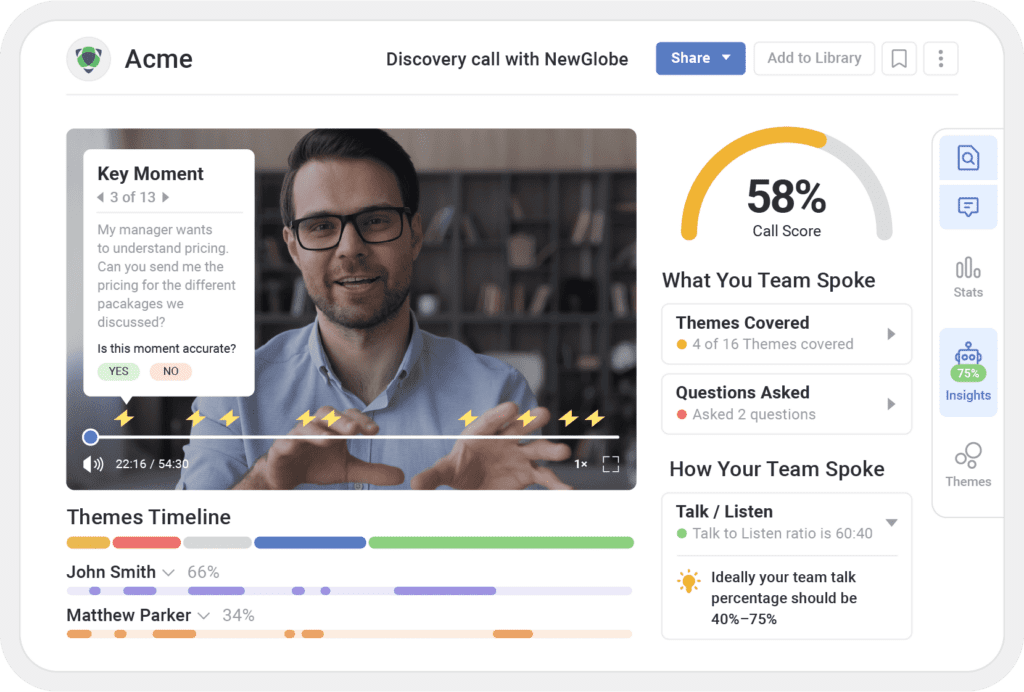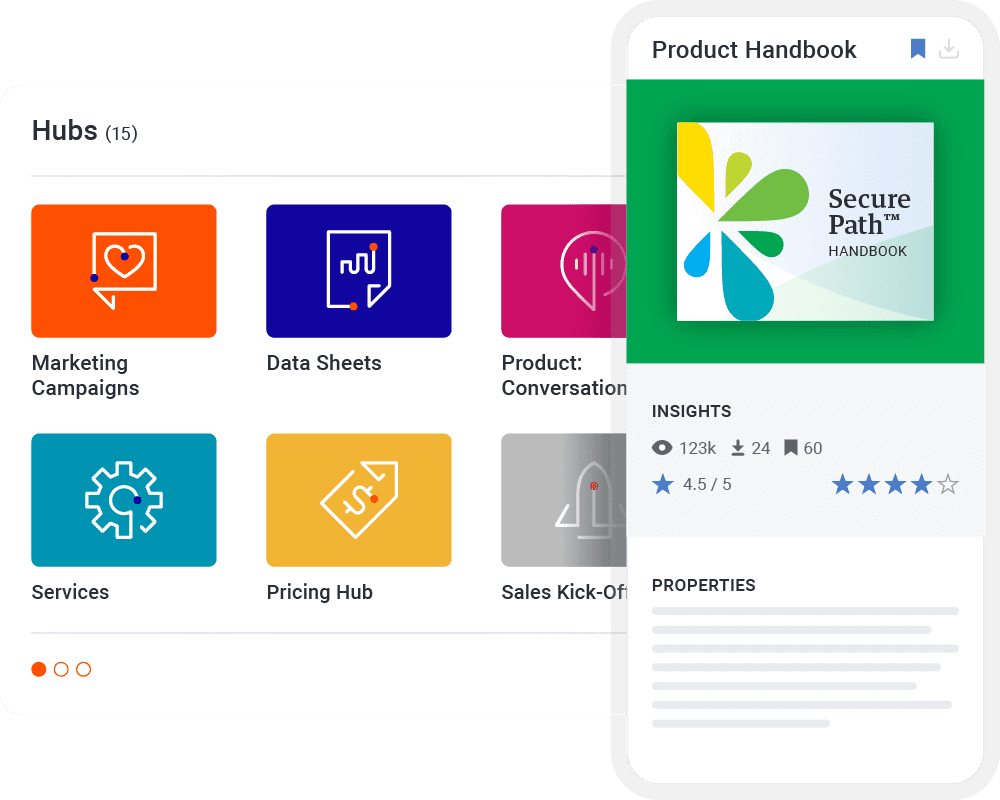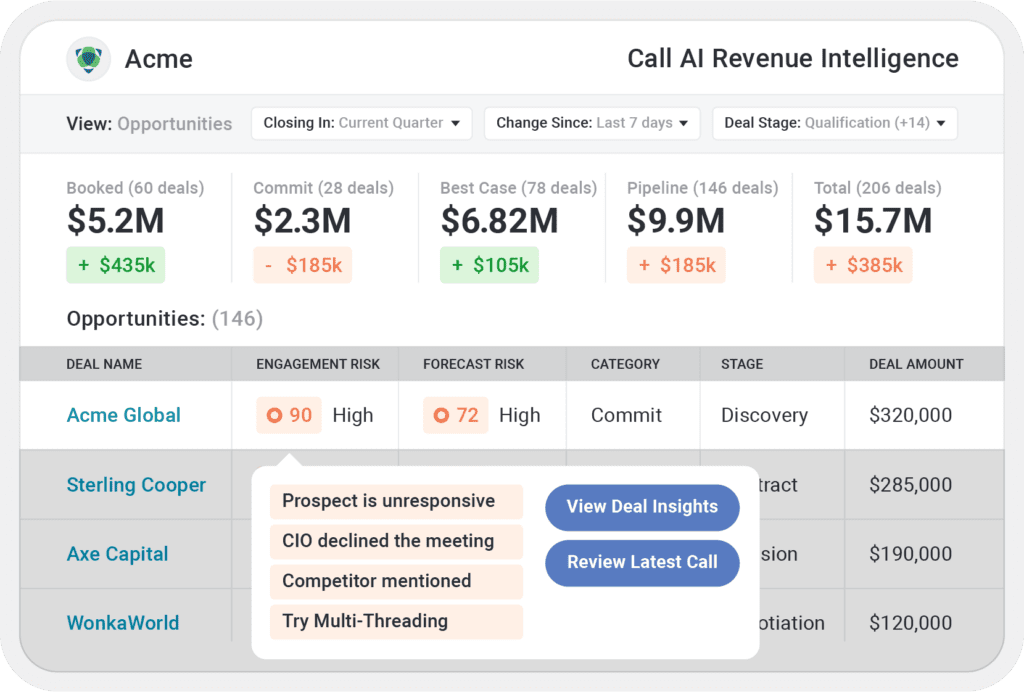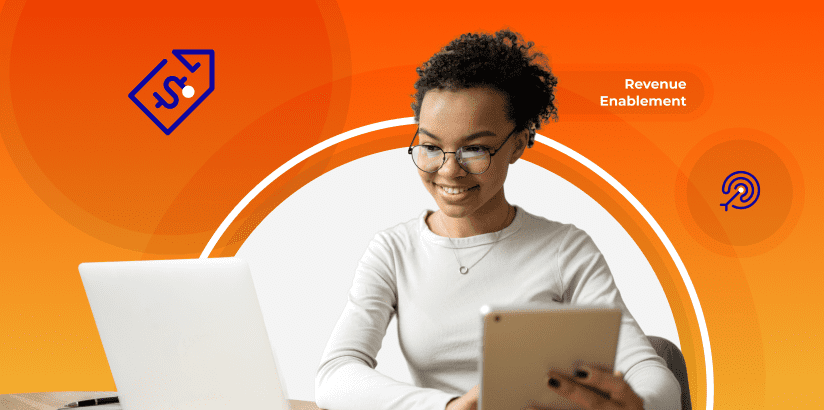As a revenue leader, you’re likely quite familiar with the concept of sales enablement. You’re probably already investing in sales enablement teams, technology, and programs to improve sales engagement and performance.
But increasingly, winning organizations are shifting to the next iteration of enablement: revenue enablement.
Why the shift?
Modern B2B customers expect great experiences, whether they’re engaging with a sales rep for the first time or seeking advice from a trusted customer success manager. Revenue enablement ensures all customer-facing roles—including sales, marketing, customer success, and support—are aligned and have the right tools, data, and resources to deliver outstanding, connected experiences across the entire customer journey.
Ready to learn more about revenue enablement, how it can positively impact business outcomes, and how to get started with revenue enablement? Read on as we explore everything you need to know about revenue enablement.
What is revenue enablement?
First things first: what is revenue enablement?
Revenue enablement is an expansion of sales enablement. It is a practice focused on ensuring all customer-facing roles—including sales, marketing, and customer success (among others)—have the right tools, resources, processes, and data to deliver outstanding experiences throughout the customer lifecycle.
Today’s B2B buyers expect seamless experiences wherever they are on their journey. Revenue enablement ensures alignment across the entire customer journey, allowing for connected experiences that delight customers. Doug Bushée, Senior Director analyst at Gartner, says revenue enablement “provides buyers with a seamless and more effortless experience.”

Revenue enablement vs. sales enablement: How are they different?
Sales enablement and revenue enablement are related concepts, but there are some key differences between them.
Sales enablement refers to the strategies, processes, and technologies that support and empower sales teams to sell more effectively. This includes activities such as providing sales training and coaching, developing sales collateral and tools, and ensuring that sales teams have access to the right information and resources to close deals.
Revenue enablement, on the other hand, encompasses a broader range of activities that go beyond just supporting sales teams. It involves aligning all customer-facing functions of an organization, such as:
-
- Marketing
-
- Sales
-
- Customer Success
-
- Support
This includes optimizing the entire customer journey, from lead generation and nurturing to post-sales support and renewal. Revenue enablement aims to drive revenue growth by maximizing the lifetime value of customers.
In summary, sales enablement is focused on supporting and empowering the sales function specifically, while revenue enablement is focused on aligning all customer-facing functions around a common revenue goal. (Find out where your revenue enablement IQ stacks up here.)
| Revenue enablement | Sales enablement | |
|---|---|---|
| Purpose | Ensure all customer-facing teams have the tools, resources, processes and information to engage customers throughout the customer lifecycle | Ensure sales teams have the tools, information, content, and resources to engage with buyers and close more deals. |
| Goal | Consistent, streamlined customer experiences | Improved sales performance |
| Primary audience | All customer-facing roles, including Sales, Marketing, Pre-sales engineers , Customer Success, and Customer Support | Sales |
| Examples of KPIs | Revenue growth, customer retention, customer satisfaction, customer lifetime value, cross-sales, upsells, and referrals | New rep ramp time, quota attainment, average deal size, sales cycle length, conversion rates, and cost per customer |
| Primary responsible party | Revenue enablement team | Sales enablement team |
| Who team reports to | Chief Revenue Officer | Chief Sales Officer |
Why should you implement revenue enablement?
Today’s business-to-business (B2B) customer expects more from their buying experience. They want relationships, experiences, and understanding, not sales-driven transactions. In fact, Salesforce research indicates that 66% of customers expect companies to respond to their unique needs.
When sales enablement and revenue operations (RevOps) work hand in hand, organizations are poised to:
1. Increase revenue
By aligning all customer-facing functions around a common revenue goal, you can help optimize the entire customer journey, resulting in increased revenue generation.
2. Improve customer experience
You can ensure that customers receive a consistent, high-quality experience throughout their entire journey with an organization, from initial engagement to post-sales support.
3. Better alignment and collaboration
Promote better alignment and collaboration between different customer-facing functions, such as marketing, sales, customer success, and support, improving efficiency and effectiveness.
4. Increase customer lifetime value
By optimizing the customer journey and ensuring a positive customer experience, you can help increase customer loyalty and retention, leading to higher customer lifetime value.
5. Better data and insights
Get a have a holistic view of the customer journey, which can lead to better data and insights into customer behavior, preferences, and needs.
Overall, revenue enablement can help organizations drive revenue growth, improve customer satisfaction and loyalty, and increase operational efficiency and effectiveness.
How can revenue enablement help your sales team?
Taking this approach can help your sales team by doing the following:
1. Better aligning with other customer-facing functions
Revenue enablement aligns all customer-facing functions around a common revenue goal, ensuring that sales teams work collaboratively with marketing, customer success, and support teams. This alignment ensures a consistent customer experience throughout the entire customer journey, which can help sales teams close deals more effectively.
2. Improving lead generation and nurturing
Revenue enablement helps organizations develop a more comprehensive understanding of their target market and buyer personas. This knowledge can help sales teams generate higher-quality leads and nurture them more effectively, resulting in a higher conversion rate.
3. Enhancing sales enablement
Revenue enablement helps organizations develop more comprehensive sales enablement strategies that go beyond just providing training and collateral to sales teams. It ensures that sales teams have access to the right information and resources at every stage of the customer journey, enabling them to sell more effectively.
4. Better data and insights
Revenue enablement requires organizations to have a holistic view of the customer journey, which can lead to better data and insights into customer behavior, preferences, and needs. Sales teams can use this information to tailor their sales approach and messaging, resulting in higher win rates.
5. Increasing customer lifetime value
By optimizing the customer journey and ensuring a positive customer experience, revenue enablement can help increase customer loyalty and retention, leading to higher customer lifetime value. Sales teams can benefit from this by having a larger pool of loyal customers to upsell and cross-sell to.
Overall, revenue enablement can help sales teams sell more effectively by providing them with the right information, resources, and support to close deals, and by ensuring that they work collaboratively with other customer-facing functions to provide a consistent, high-quality customer experience.
What are some examples of revenue enablement tools?
Revenue enablement tools are software solutions that help businesses increase revenue by improving their sales and marketing processes. Some examples include:
CRM (Customer Relationship Management) software
A CRM system helps businesses manage their customer interactions and sales pipelines, enabling them to track leads, forecast revenue, and automate sales workflows.
Marketing automation software
Marketing automation software helps businesses automate their marketing processes, such as email campaigns, social media management, and lead scoring.
Sales enablement software
Sales enablement solutions provide sales teams with the tools and content, such as sales collateral, training materials, and analytics, they need to engage with prospects and close deals.


Content management software
Sales content management software allows businesses to organize and manage their marketing and sales content, such as product information, marketing collateral, sales decks, competitive battlecards, pricing sheets, and case studies.


Sales forecasting software
Sales forecasting software uses data analysis and machine learning algorithms to predict future sales trends, enabling businesses to make more informed decisions about their sales and marketing strategies.


Customer analytics software
Customer analytics software gives businesses insights into their customer behavior and preferences, enabling them to tailor their sales and marketing strategies to better meet customer needs.
Best practices for getting started with revenue enablement
As you’re building up your revenue enablement strategy, here are key things to keep in mind:
- Establish key business objectives for revenue enablement, such as overall revenue growth and individual seller productivity metrics
- Decide whether to consolidate technology and data under one revenue productivity platform versus integrating point solution products, or some version of each
- Determine a cadence for discussing and analyzing revenue enablement initiatives – prioritize and stick to it
- Hold front-line management, marketing, sales enablement, and ops accountable to overall business goals
- Create a cadence around org readiness to be discussed alongside forecasting and pipeline reviews
Ready to take the next step?
To pivot toward a revenue enablement-focused approach, organizations should take the following steps:
- Align around a common revenue goal: The first step is to align all customer-facing functions around a common revenue goal. This involves setting clear revenue targets and ensuring that all customer-facing teams understand how their activities contribute to those targets.
- Develop a comprehensive understanding of the customer journey: To optimize the customer journey, organizations need to develop a comprehensive understanding of their customers and their buying journey. This includes understanding their pain points, preferences, and needs at each stage of the journey.
- Implement a technology stack: Revenue enablement requires a technology stack that supports the entire customer journey, from lead generation and nurturing to post-sales support and renewal. This includes marketing automation, customer relationship management (CRM), and customer success platforms.
- Develop a sales enablement strategy: Revenue enablement goes beyond just sales enablement. However, it’s still essential to develop a sales enablement strategy that ensures that sales teams have the right information, resources, and support to sell effectively.
- Measure and optimize performance: To ensure efforts are effective, organizations need to measure performance regularly and optimize their approach based on data and insights. This includes tracking key performance indicators (KPIs) such as revenue growth, customer lifetime value, and customer satisfaction.
Implementing revenue enablement is an ongoing process that requires continuous refinement and improvement. By taking these steps, organizations can create a customer-centric revenue growth engine that optimizes the entire customer journey and drives business success.
Ready to learn more about how Mindtickle can make this a reality at your organization?
Revenue Enablement in Mindtickle
Connect with our team so we can learn more about your revenue enablement challenges and discuss how Mindtickle can help.
Request a DemoThis post was originally published in April 2023, updated in November 2023, and again in June 2024.







